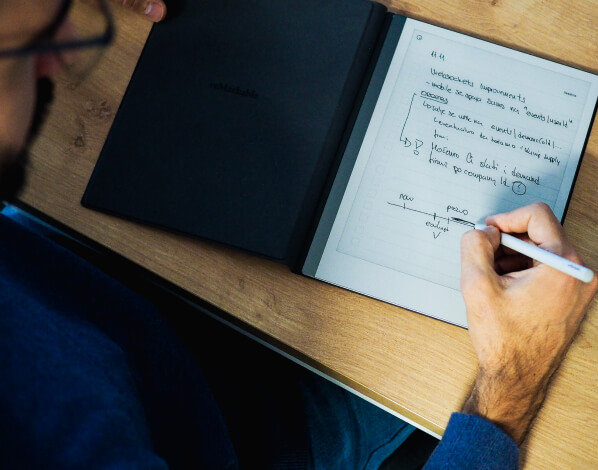CITO - The first corporate venture of Volkswagen
CITO - The first corporate venture of Volkswagen
Read a corporate venture case study about Cito, a purely digital courier service that connects customers directly with logistics partners in the vicinity.
Joining forces with Porsche Consulting and an outstanding intrapreneur, Gregor Stock in Fall 2019, we started building up Cito - the first-ever corporate venture case Volkswagen pursued in this way.
THE IDEA BEHIND THE CORPORATE VENTURE
With Volkswagen Commercial Vehicle’s (VWCV) focus and drive to enter the "Transport as-a-service (TaaS)” model, a new start-up was born.
The initial opportunity was discovered by VW's Digital Manager, Dr. Gregor Stock (now intrapreneur and Cito CEO). After a personal frustration of a colleague with existing courier services, he got interested in the market and has identified a gap that wasn’t covered well enough.
The main idea behind Cito was to create a fast, agile, and reliable B2B digital courier service through which we would connect customers directly with logistic partners in the vicinity, with an emphasis on quick processing and high price transparency while automating all paperwork and planning.
THE CHALLENGE
Our drive was to reshape the courier delivery market by establishing fairness in a sustainable way. The way to do it was by setting up an e-delivery courier service that would change the time-critical logistics market through digital technology.
Our objective is to play a key part with Volkswagen Commercial Vehicles in shaping the mobility of the next decade. - Carsten Intra, CEO VW Commercial Vehicles
We detected outdated principles and current problems on the market and stepped out of the comfort zone by implementing different solutions:
Challenges we encountered and the implemented solutions
START WITH THE 'FAKE IT UNTIL YOU MAKE IT' APPROACH
The most important and difficult element in the business-building process is the start.
Following our basic principles in venture building, we started small and hands-on. After gathering market insights and validating pain points, business modeling was in store.
We based it on a low-code model - without writing tons of lines of code, we launched the service and spared time for more important processes.
Fast and at the moment, we were able to test the product based on real data. In other words, the goal was to go as far as possible in the sales funnel in order to generate traction and get the highest possible quality of insights. By generating traction in a live market scenario, we got results that we were able to, later on, translate to the main product.
And that is the essence of our unique Fake it until you make it approach.
The building process and project progress
THE PROCESS OF CORPORATE VENTURE BUILDING
When doing low code, testing the product also means doing things manually. That implies literal manual work by combining Whatsapp, email, manual invoice work, tracking information via email, etc.
Fake is a strong word, but in this scenario, it is everything but fake. The reason why our approach is efficient is that it has what most of them lack - it is realistic. By testing the product on real data and on a live market, we got a clear picture and started preparing for the validation process. Prior to the actual building process, we set our main hypothesis within the idea validation. Here we divided them into 4 categories in order to get a better understanding of the steps we need to take next.
MAIN HYPOTHESES:
1. Desirability
Hypothesis: It is challenging to find drivers that want to drive on Cito.
Conclusion: It is rather easy to find drivers if you treat them well, communicate transparently and have enough demand.
Hypothesis: It will be hard to find companies joining as customers due to existing couriers.
Conclusion: Companies are open to changing the provider if they see the added value for them. There are also a lot of companies that want to use it regularly but not daily.
2. Feasibility
Hypothesis: We can create a process that is way more efficient and transparent than all current process flows.
Conclusion: Even with the "Fake it until you make it", we proved that we can operate a more efficient way of courier delivery process. We saw that from a technical point of view, and were able to build the leading tech environment in the long term.
3. Viability
Hypothesis: Companies are eager to spend money on the service and we can deduct a solid provision.
Conclusion: Companies spend money on our service and drivers are satisfied with the provision we take from them.
4. Unfair advantage
Hypothesis: We can use existing VW assets to leverage the success chances.
Conclusion: We are able to convince VW internal stakeholders to use Cito as an internal delivery platform when it is fully developed, and use other VW assets like commercial cars, insurance, etc. as additional value.
WHAT WERE THE RESULTS?
In the 1st week:
We had 10 driver applications and 3 registered companies.
In the 2nd week:
We had 30 driver applications, 7 companies registered, and 2 interested courier companies.
In the 3rd week:
We had 34 registered drivers, 9 registered companies, 2 requests for the transaction (1 canceled, 1 planned).
After the initial phase, things started growing, and within:
3 months, we launched the MVP.
6 months, we iterated Cito into a fully automated platform.
9 months, we generated a turnover that was 7x of the marketing budget.
THE PRODUCT
The end result we created was a purely digital courier service aimed at corporate customers, as well as courier drivers.
The Cito app works in real-time - within a minute, companies are able to order courier services and find a provider.
Step 1: Manage order details
Whether they are dealing with urgent and time-critical transports or direct trips, among other things, they can track and document their shipment.
Step 2: Live track delivery
Our testing proved that processes regarding paperwork are time-consuming and vague. By integrating automatic billing, live tracking, automatic signatures, and storing them in an easily accessible account, those worries were eliminated.
With Cito, the ordering process is simplified and the corporate customer gains a personalized customer area with a clear order history:
Step 3: Pick up confirmation
Cito is not a service for only corporate customers. It also offers self-employed couriers the chance to become logistic partners and undertake transports in accordance with the freight contract.
METRICS & RESULTS DURING THE MVP PHASE
From the beginning in 2019, we have come a long way and - successfully gaining trust from global brands such as Thomas Henry and Tier, as well as building up our numbers:
150 customers (commercial and private)
500 deliveries within Germany and whole Europe
99% delivery success rate
35% recurring customers
200 driver applications
CITO TODAY - A SUCCESSFUL CORPORATE VENTURE
Today, Cito is a subsidiary of VW Group with dedicated leadership, a growing team of +20 people, and a big goal to disrupt and change the courier market for good!
The Cito case proves once again how important intrapreneurship is for established corporations and what can be achieved with the right team and approach.
Related mantras
Join us!
Like what you’ve read? Check out our open positions and join the Martian team!
See openings
